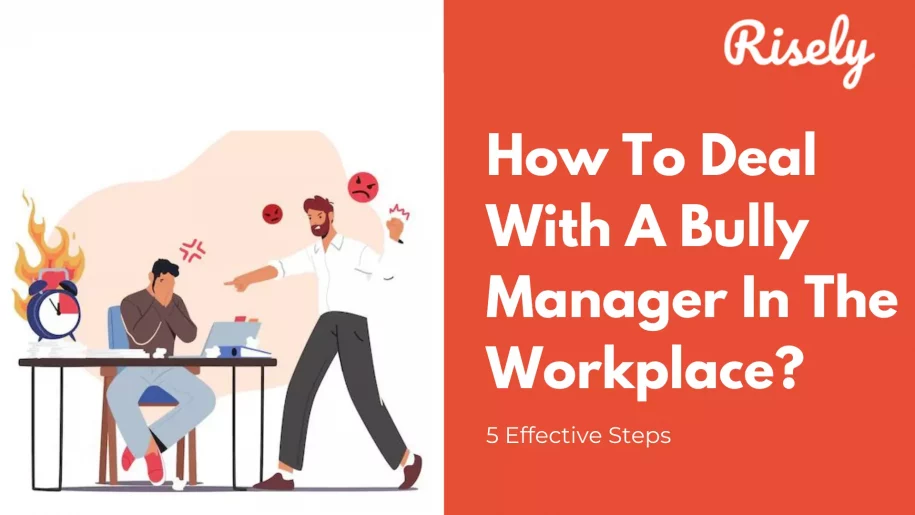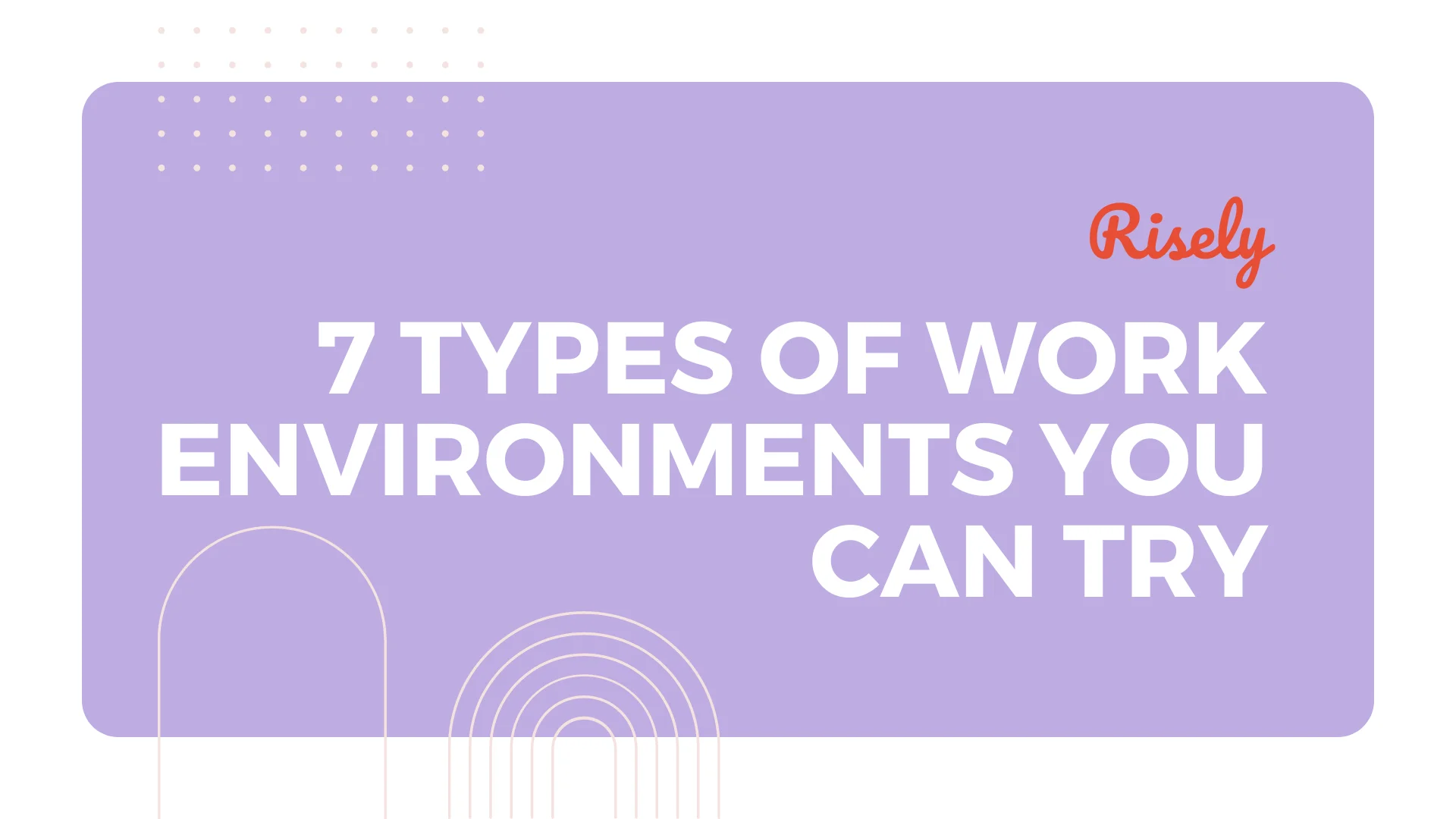How To Deal With A Bully Manager In The Workplace? 5 Effective Steps
Are you feeling intimidated and stressed at work? Do you feel like you’re constantly walking on eggshells, afraid of making any mistake that will get you in trouble with your bully manager? If so, you’re not alone. Workplace bullying is not unheard-of. Rather, unfortunately, bullies are increasingly common in workplaces worldwide. Moreover, the situation becomes perplexing when the bullying behavior comes from a senior position with authority. While it can be challenging to deal with, there are several ways that you can manage this situation successfully. This blog post will outline the best ways to deal with a bully manager as an employee. By following these steps, you’ll be able to maintain a positive work environment and protect yourself from harassment. So don’t wait any longer – read on to learn how to deal with a bully manager!
Who is a Bully Manager?
It has become commonplace to see bullying happen around us. Similarly, bullying has become a part of many workplace cultures too. Bullying can occur across many levels, at times even among peers. However, the situation becomes troublesome for employees when bullying comes from a manager. The scenario is doubly problematic as the manager can be the source of help in difficult situations but becomes the problem itself in this case. Moreover, differentiating bullying from tough management can become complicated, too, at times. As an employee, it becomes crucial to keep a keen eye to understand the difference and take action accordingly: The Top 10 Strategies For Dealing With Difficult People At Work A bully manager is someone who threatens or intimidates you repeatedly. They might also actively attempt to isolate you and sabotage your ventures, even in the absence of any apparent reason. Their behavior, in general, turns out to have a negative impact on you and your environment. There are a few things to remember when dealing with a bully manager. The first is that they’re not just trying to be difficult – they genuinely seem intent on harming or frustrating you. So please don’t waste your time trying to reason or negotiate with them; instead, arm yourself with the knowledge and tools to protect yourself from their abuse. Secondly, understand that you are not at fault. Their behavior results from their circumstances and views instead of yours or your actions.Types of bullies in the workplace
Bullying in the workplace can take various forms and can be perpetrated by individuals with different motivations and behaviors. Here are some common types of bullies in the workplace:- Authoritarian Bullies: These bullies seek power and control over others through intimidation, threats, and micromanagement. They often use their position of authority to manipulate and dominate subordinates.
- Manipulative Bullies: Manipulative bullies are skilled at covertly undermining their colleagues and manipulating situations to their advantage. They may spread rumors, sabotage projects, or engage in passive-aggressive behavior to exert control and damage the reputation of others.
- Narcissistic Bullies: Narcissistic bullies have an inflated sense of self-importance and entitlement. They exploit others for personal gain, lack empathy, and are often preoccupied with their success and status. They may belittle or demean colleagues to bolster their egos.
- Sabotage Bullies: These bullies actively work to undermine the success of others by sabotaging projects, withholding information, or intentionally setting colleagues up for failure. Their goal is to maintain their position of dominance by hindering the progress and advancement of others.
- Passive-Aggressive Bullies: Passive-aggressive bullies express hostility and aggression in subtle, indirect ways. They may withhold information, give backhanded compliments, or engage in gossip and backstabbing behind their colleagues’ backs.
- Cliques and Mobbing Bullies: Some workplace bullies operate within cliques or groups, using strength in numbers to intimidate and isolate their targets. This behavior can escalate into mobbing, where multiple individuals systematically harass and ostracize a colleague.
- Sexual Harassment Bullies: Sexual harassment in the workplace is a form of bullying characterized by unwanted advances, comments, or gestures of a sexual nature. This behavior creates a hostile work environment and can have severe legal and psychological ramifications.
Signs of Workplace Bullies
Recognizing the signs of workplace bullies is crucial for creating a safe and respectful work environment. Here are some common signs that you must look out for:- Aggressive Behavior: Workplace bullies often display aggressive behavior such as yelling, shouting, or threatening language toward colleagues.
- Constant Criticism: Bullies may consistently criticize and belittle their coworkers, focusing on their work performance, personal characteristics, or lifestyle choices.
- Micromanagement: Bullies may exert excessive control over their subordinates by micromanaging their tasks, constantly checking their progress, and undermining their decision-making authority.
- Isolation and Exclusion: Bullies may intentionally isolate and exclude specific individuals from team activities, meetings, or social gatherings, making them feel ostracized and marginalized.
- Undermining Others: Bullies may undermine the efforts and accomplishments of their colleagues by spreading rumors, taking credit for their work, or sabotaging their projects.
- Intimidation Tactics: Workplace bullies may use intimidation tactics such as threatening, aggressive body language, or invading personal space to intimidate and control their targets.
- Inconsistent Behavior: Bullies may exhibit inconsistent behavior, alternating between periods of charm and aggression to manipulate and confuse their colleagues.
- High Turnover Rate: A workplace with a high turnover rate or frequent employee complaints may indicate underlying issues such as bullying behavior.
- Physical Symptoms: Employees who are experiencing workplace bullying may exhibit physical symptoms such as stress, anxiety, insomnia, headaches, or other stress-related ailments.
How does a Bully Manager impact the workplace?
Bullying in the workplace can have a negative impact on both the individual being bullied and those around them. As a result, it’s vital to take action if you notice bullying taking place. For the bully victim, their work can become a hostile and uncomfortable place. They may feel like they’re constantly in danger, leading to decreased productivity and stress. Furthermore, bullying can create tension and conflict with co-workers who may also be impacted by the situation. It’s important to remember that not all bullying is wrong – some people find strength in standing up against abuse. However, if you notice someone being bullied at work, it’s always best to reach out for help or support from your supervisor or HR department. Continue reading here to learn how to handle workplace bullying. As managers are often considered responsible for tackling bullying in the workplace, it’s essential to be aware of how they can contribute to the problem. Bullies often target weaker or vulnerable people, and a bully manager can enable this behavior by making their employees feel at risk. If you notice your staff being bullied, speak up – don’t allow anyone to be hurt unnecessarily. A bully manager defeats their own purpose. This is because they fail to make the impact that an efficient manager would. Instead, they contribute to creating a difficult environment and become a problem for the organization.
How to deal with a bully manager at work? 5 Steps for Employees
If you’re a victim of bullying at work, there are some things that you can do to protect yourself. First and foremost, it’s essential to document the incidents in as much detail as possible. This will help provide evidence if/when an official complaint is made. Additionally, it’s essential to stay calm and respectful during any conversations or interactions with your harasser – try not to escalate the situation. If they continue behaving aggressively or harassing you after voicing your concerns, speak with their boss or human resources representative about the situation. They may be able to take appropriate action to make the workplace more conducive for all employees. A few steps that you can take as an employee dealing with a bully manager are:- Speak up – If you’re experiencing bullying at work, it’s essential to speak up. This can help to prevent the situation from continuing and/or escalating. Also, this will help you gather support and save you from forced isolation arising out of bullying.
- Document everything – Keep a record of all incidents that occur in your workplace, including who was involved, what was said/done, and when it happened. This will help strengthen your case if an official complaint is made. Clear communication will become your key to freedom.
- Stand up for yourself – If someone is hurting or harassing you at work, don’t be afraid to stand up for yourself. Don’t let them get away with their behavior. Remember that you are not at fault throughout the incident and its aftermath.
- Seek support – If you need help dealing with a bully manager, don’t hesitate to reach out to your colleagues or human resources representative. They may be able to provide some advice and/or assistance during this difficult time.
- Prioritize your well-being – Try to keep yourself safe from manipulation and take breaks as necessary to ensure toxic people are not harming your mental and physical well-being. Self-care has to be among your top priorities. Remind yourself to establish healthy protective boundaries and stick to them. The mantra of forgiveness will be your aide too!
Other Interesting Reads
Conclusion
In summary, it is vital to be aware of how your behavior can contribute to the problem of workplace bullying. You will help keep your team safe and productive by taking steps to prevent and address bullying. Additionally, remember that you are not the only person responsible for creating a safe and positive work environment. But as a manager, it is your responsibility to be aware of your actions and to take steps to ensure that everyone at work feels comfortable speaking up when they have concerns or problems. Workplace bullying is a problem that is on the rise, and it’s essential to know how to deal with it. This blog has outlined five effective ways to deal with a bully manager. Following these steps can protect yourself and maintain a positive work environment. If you find yourself in a situation where you feel threatened or harassed by your boss, don’t hesitate to reach out for help.Download the free effective one-on-one meeting toolkit today!
Conduct effective one-on-one meetings with your team to understand their concerns.
Dealing with a bully manager FAQs
How to react to a bully boss?
A bullying boss is one of the worst things about a workplace. To find a way out of such a situation, take the following steps: Raise your concerns to the HR team and management Avoid confrontation if you feel unsafe Set your protective boundaries to save your mental health from the impact
How to recognize a bully manager?
A bully manager would typically try to intimidate or overpower you. A few signs of bullying managers are: Threatens action and overworks team members Isolates members from the team Participates in rumor-mongering
What to do when your boss starts nitpicking?
Firstly, do not give in to immediate reactions. Instead, look at the bigger picture and evaluate all actions. Then, initiate a conversation with your boss to raise your concern. Finally, adopt a friendly tone rather than an aggressive one. Further, seek help from HR if personal initiatives do not work.
Other Related Blogs
7 Types Of Work Environments You Can Try
7 Types Of Work Environments You Can Try In today’s work culture, various types of work environments exist to cater to different philosophies, needs, and job functions. Each type offers…
How To Handle Criticism At Work? 7 Tips For Managers
How To Handle Criticism At Work? 7 Tips For Managers Handling criticism at work is a challenge that many managers face. Criticism can be difficult to handle whether it’s from…
Building Inclusive Workplaces: DEI Goals and How to Achieve Them
Building Inclusive Workplaces: DEI Goals and How to Achieve Them According to a LinkedIn study, 76% of job seekers mentioned diversity as a critical factor in evaluating potential workplaces. Yet, we…
How to Overcome the Top 10 Manager Biases at Work?
How to Overcome the Top 10 Manager Biases at Work? Ever feel a gut instinct tugging at your decisions, even in the face of logic? Nobel laureate Daniel Kahneman would…


